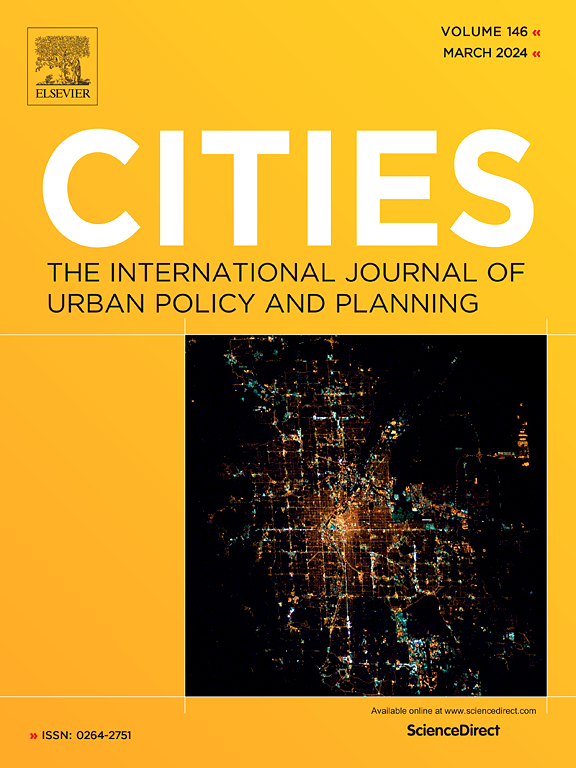Deregulation and space: The opening of new rent gaps via office-to-residential conversion in England
IF 6.6
1区 经济学
Q1 URBAN STUDIES
引用次数: 0
Abstract
Research on office-to-residential conversion has not thoroughly attended to the relationship between deregulation and space—failing to unveil different market-driven spatial relationships across English regions. Since 2013, the English government has allowed office-to-residential conversion without requiring permission from the Local Planning Authority. In the context of planning deregulation, this modification extended Permitted Development Rights, exempting certain developments from requiring Local Planning Authority permission. To date, no study has given a national econometric explanation for the spatial distribution of office-to-residential conversion under Permitted Development Rights. By applying a Spatial Lag Model, this research strengthens our understanding of the drivers determining the spatial patterns of office-to-residential outcomes between 2013 and 2023. This research unveils that the location in London and the difference between the highest residential and lowest office rent gap are the two predominant factors that explain greater conversion rates. It lays out two novel contributions. First, the significance of spatial dependency when addressing linkages between the office and residential markets vis-à-vis planning modifications. Second, it illustrates how potential rent gaps and the agency they trigger can motivate developers to drive rent gaps. This research reveals the spatial structures of financial logics that shape office-to-residential outcomes, with significant lessons for the deregulation of urban planning policy and its failure to create adequate housing and sustainable built environments for communities.
放松管制和空间:在英国,办公室到住宅的转换带来了新的租金差距
对办公室到住宅转换的研究并没有彻底关注放松管制与空间之间的关系——未能揭示英国各地区不同的市场驱动的空间关系。自2013年以来,英国政府允许将办公楼改造为住宅,而无需获得地方规划局的许可。在规划放松管制的背景下,这一修改延长了许可发展权,免除了某些发展需要当地规划当局的许可。迄今为止,还没有一项研究对许可发展权下办公住宅转换的空间分布给出全国性的计量经济学解释。通过应用空间滞后模型,本研究加强了我们对2013年至2023年办公室到住宅结果空间格局的驱动因素的理解。这项研究表明,伦敦的地理位置以及最高住宅和最低办公室租金差距之间的差异是解释更高转换率的两个主要因素。它提出了两个新颖的贡献。首先,在解决办公和住宅市场之间的联系时,对-à-vis规划修改的空间依赖性的重要性。其次,它说明了潜在的租金差距及其引发的代理如何激励开发商扩大租金差距。本研究揭示了塑造办公到住宅结果的金融逻辑的空间结构,对放松城市规划政策及其未能为社区创造足够的住房和可持续建筑环境具有重要的借鉴意义。
本文章由计算机程序翻译,如有差异,请以英文原文为准。
求助全文
约1分钟内获得全文
求助全文
来源期刊

Cities
URBAN STUDIES-
CiteScore
11.20
自引率
9.00%
发文量
517
期刊介绍:
Cities offers a comprehensive range of articles on all aspects of urban policy. It provides an international and interdisciplinary platform for the exchange of ideas and information between urban planners and policy makers from national and local government, non-government organizations, academia and consultancy. The primary aims of the journal are to analyse and assess past and present urban development and management as a reflection of effective, ineffective and non-existent planning policies; and the promotion of the implementation of appropriate urban policies in both the developed and the developing world.
 求助内容:
求助内容: 应助结果提醒方式:
应助结果提醒方式:


